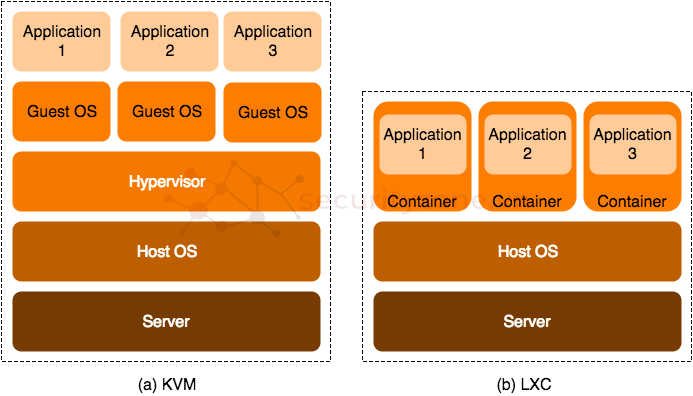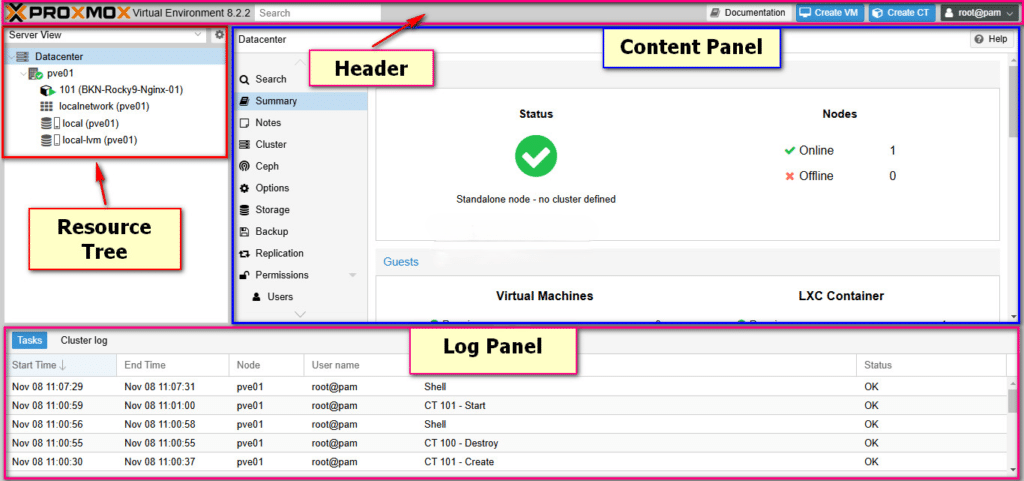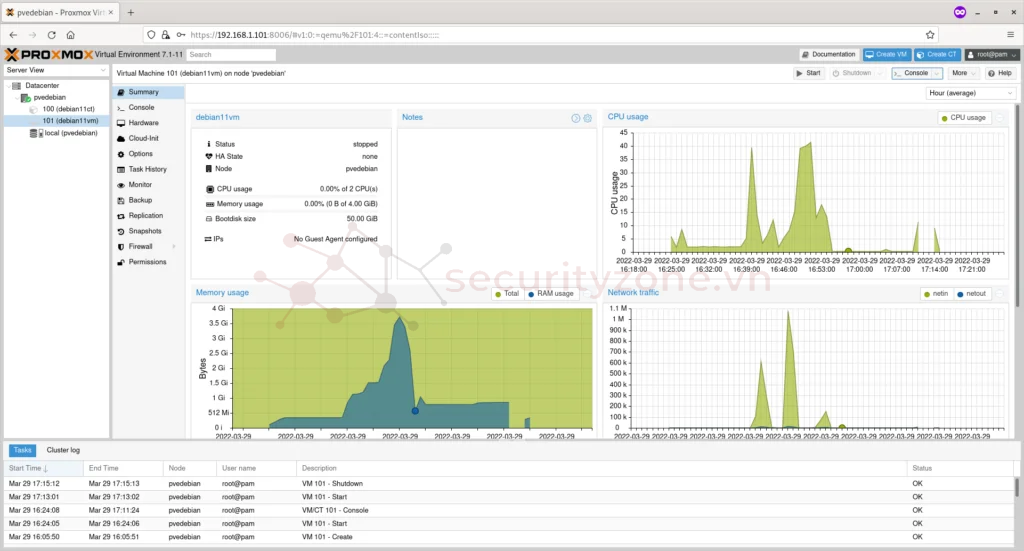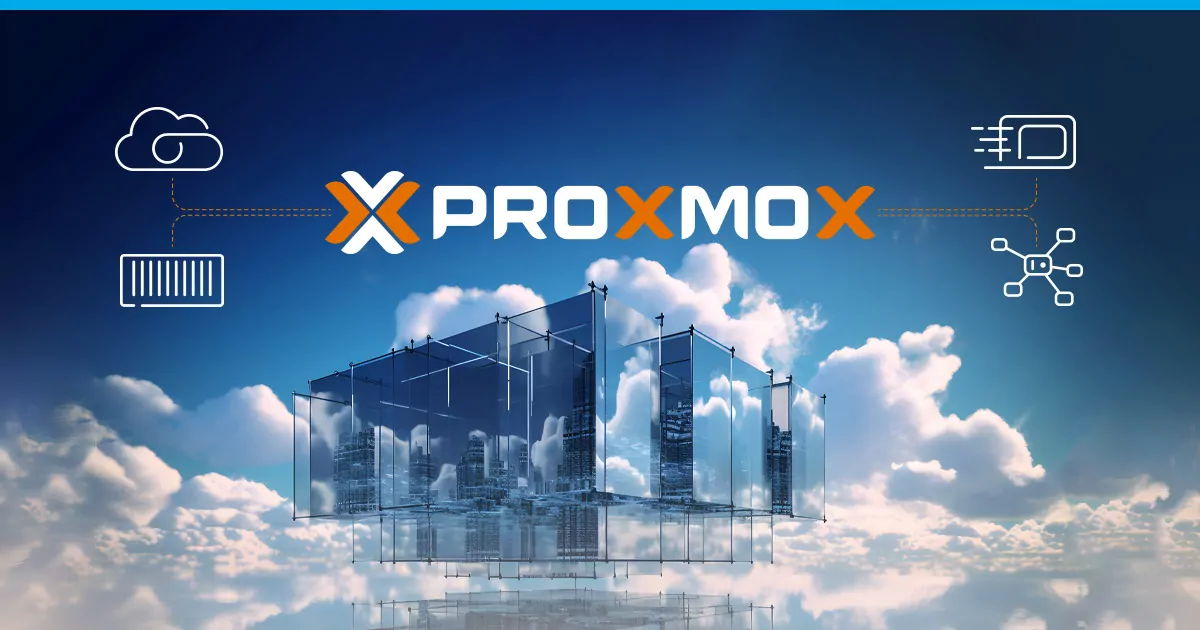Proxmox Virtualization Platform: Features, Benefits, and Comparison
Maximize your IT resources with Proxmox, an open-source solution for managing both virtual machines and containers efficiently.

1. Introduction to Proxmox
Proxmox is an integrated virtualization platform supporting both KVM (Kernel-based Virtual Machine) and LXC (Linux Containers). Users can create and manage full virtual machines or lightweight containers to optimize performance and resource usage.
Proxmox VE (Virtual Environment) is the core component, providing a robust environment for managing VMs on physical infrastructure. Proxmox LXC enables lightweight virtualization, saving more resources compared to traditional VMs.
Looking for a powerful, free, and easy-to-manage virtualization solution? Proxmox is your answer!
2. Key Features of Proxmox
KVM Virtualization & LXC Containers
Proxmox supports KVM for running VMs with various operating systems like Linux, Windows, and BSD, leveraging hardware virtualization for better performance and stability. LXC containers offer lightweight, isolated environments sharing the host OS kernel, reducing resource usage and startup times.

User-Friendly Web Interface
Proxmox provides an intuitive web interface for managing the entire virtualization system remotely, offering real-time monitoring and easy VM/container creation, configuration, and deletion.

Backup and Restore
Proxmox allows full or incremental backups of VMs and containers without service interruption. Scheduled backups and quick restores ensure system safety in case of incidents.
Clustering and Centralized Management
Proxmox supports clustering, enabling centralized management of multiple nodes. This is essential for large-scale deployments, resource balancing, and improved fault tolerance.
Flexible Storage Options
Proxmox is compatible with various storage protocols such as NFS, iSCSI, Ceph, and GlusterFS, allowing you to choose the best storage solution for your needs.
Advanced Virtual Networking
Proxmox offers powerful tools for managing virtual networks, including VLANs, bridge networks, and integrated firewalls, ensuring security and optimized data flow.
3. Management and Operation
Web-Based Administration
The intuitive web interface allows remote monitoring and management of VMs, containers, and hardware resources. You can easily create, edit, or delete VMs/containers and monitor CPU, RAM, storage, and network bandwidth.

Backup and Recovery
Proxmox supports both full and incremental backups, optimizing storage and reducing backup time. Quick recovery minimizes downtime, crucial for business continuity.
System Updates and Maintenance
Updates and maintenance tasks can be performed via the web interface or command line. Automated tasks like scheduled backups and performance checks reduce admin workload and ensure smooth operation.
Efficient Resource Management
Visual monitoring tools help track CPU, RAM, disk, and network usage. You can adjust VM/container resources on the fly without shutting down, ensuring continuous service.
User and Permission Management
Proxmox includes detailed user and permission management, allowing you to assign roles and restrict access as needed for security and compliance.
Integrated KVM + LXC virtualization, cluster management, and automated backups—all in one platform: Proxmox!
4. Important Considerations When Using Proxmox
Hardware Requirements
For optimal performance, use hardware with virtualization support (Intel VT-x or AMD-V). Multi-core CPUs and ample RAM are recommended for running multiple VMs and containers.
Community Support and Documentation
Proxmox has a large user community and extensive documentation. Forums, guides, and tutorials are readily available for troubleshooting and learning.
Enterprise Support Services
While Proxmox is free and open-source, paid enterprise support is available for organizations needing fast security updates and expert technical assistance.
5. Proxmox vs. Other Virtualization Platforms

| Platform | Key Advantages | Limitations |
|---|---|---|
| Proxmox | Open-source, supports KVM & LXC, free basic features, web-based management | Requires hardware with virtualization support |
| VMware vSphere | Powerful enterprise features, robust ecosystem | High licensing and support costs |
| Hyper-V | Tight integration with Microsoft tools, ideal for Windows environments | Limited support for non-Windows OS, relies on PowerShell/System Center |
| Xen | Strong for large-scale deployments, supports full and para-virtualization | Complex setup, lacks integrated web management |
6. Conclusion
Proxmox is a powerful open-source virtualization platform suitable for both businesses and individuals. By integrating both KVM and LXC technologies, it optimizes resource usage and reduces operational costs. Its user-friendly web interface, backup and restore features, and clustering capabilities make it an excellent choice for flexible, scalable IT infrastructure management.
If you are seeking a versatile, cost-effective virtualization solution with advanced features and community support, Proxmox is worth considering.
